Extreme Ghostbusters, 1996-97
Other people went to college. I went ghostbusting instead.
Let me explain that. I didn’t go to college. I went directly from high school into my field (at the time, commercial art). Thus, I didn’t have the collegiate experience that I later heard about from others. I didn’t live in a dorm, didn’t hook up with a peer group, didn’t develop relationships with mentors. (I also didn’t rack up student loans, which was a pretty good tradeoff.) You can’t miss what you never had, but when I learned what kinds of experiences others had in college, I did feel like I missed out on something.
As it turned out, that something was waiting for me in a different kind of school: Extreme Ghostbusters Academy.
Extreme Ghostbusters was a direct sequel to The Real Ghostbusters, which was a big deal among some of my friends in the late 80s. It went out of production in 1991, and gears slowly started turning for a followup. As recounted in another article, my entry into the world of TV animation storyboarding began in 1996 with Wing Commander Academy. When that show wrapped in the summer, I went back to comic book and illustration projects with no idea where I’d go next. But now I had an agent looking for opportunities, and a few months later, he found one.
At some point in November ’96, my agent set up what we call a “meet and greet” with a guy named Audu Paden. He was a producer at Sony Animation (which I’d never heard of), and we met for breakfast at a restaurant outside of LA. I brought some portfolio pieces with me (which included Grease Monkey comics) and we synced immediately. His current show was something called Project Geeker, but he would soon be hiring for his next one. My ears certainly perked up when he gave it a name: Extreme Ghostbusters (herafter, XGB). Sure I’d be interested, I said. Let’s keep in touch!
In short order, my agent called me up and said a formal interview had been arranged at Sony. All I remember about that interview is that it got me hired. This was huge. Not just the chance to work on another TV show, but signing on as a full-time crew member. I hadn’t worked full-time anywhere since leaving Malibu Comics over two years earlier. I really liked working from home as a freelancer. I could take on lots of projects simultaneously and didn’t have to commute anywhere.
But…the freelance jobs were fading by this time. The whole comic book industry was in freefall thanks to a seismic shift in distribution, and the signals were getting clearer by the day: get out now if you know what’s good for ya! I could either take a full-time job with a horrible commute, or take my chances on having no work at all. With a wife and a 5-year-old daughter to support, the choice was obvious. I let out a big sigh and surrendered.
The commute was…soul-crushing. Up to an hour each way through some of the worst LA traffic. Two hours a day sitting in a car. Ten hours a week, utterly wasted. I could have done SO much with that time. At the end of the first week, my depression was overwhelming. I now had exactly the kind of lifestyle I tried to avoid for my entire career. It was early December 1996, and I had no idea if it would ever get better.
I say all this to get the negatives out of the way. Because not only did EVERYTHING get better (even the commute), I found what I needed most: a peer group.
The crew for this show was HUGE. We had 40 episodes to produce (for a syndicator named Bohbot), and it required an army of over 100 people at its peak. Crews that size are unheard of today, partly because of digital streamlining, but mostly because production budgets have been forced downward, and nobody will commit to 40 any more; these days you’re lucky to get 13. The show teetered from being top-heavy (and ultimately went way over budget), but that wasn’t my concern. I was there to draw, and for the first time since my days at Malibu, I was surrounded by others who were there for the same reason.
The first sign that I’d made the right move came when I met my cubicle-mate, Jeff Brennan. I decided to make a statement by putting up a Space Battleship Yamato poster on my side, and he practically fell off his chair. He was a huge Star Blazers fan too, and already knew about the comic book I’d been working on for the last couple years. Of all the people to be randomly stationed with, he was exactly the right one.
We had come from all over the country, and a few from overseas, to find our dream careers. We all had similar histories, drawing like crazy since we were kids, grabbing onto the same inspirations (comics, movies, anime, videogames, etc.) and distinguishing ourselves with our creativity. I can’t claim we were the “best of the best,” but it felt like we had all passed the same test and found ourselves on the other side of it an elite category. One by one, we all discovered our super powers as we fought the ghost wars. It was exhilarating.
Like I said at the start, this was what I got instead of college. I’d never been in a room with that much raw talent, and what we all learned together put most of us on track for lifetime careers. The show was a pressure cooker, and when it was over many of us emerged as diamonds. These days, there are XGB veterans on almost every show I work on, or in almost every credit list I read through. I always smile when I see them, especially when they appear at the TOP of those lists.
Audu Paden was our mentor and scoutmaster, working patiently with everyone to help us find our strengths and eliminate our bad habits. There were five directors under him, each with a team of five or six storyboard artists. We all had our chance to shine, especially when the entire crew would gather to watch a finished animatic together, once or twice a week as episodes came off the assembly line. Naturally, a few of us stood out early on. Since I already had the experience of Wing Commander under my belt, my training had started earlier. So when a sixth director’s chair opened up about three months in, I was promoted to occupy it.
The traditional production method was for individual board artists to thumbnail their segments and revise them with a director’s input. As a director, I felt like it was my responsibility to visualize the entire episode, so I pumped out the entire thumbnail myself. This raised a few eyebrows. It was never expected that any director would do that much work, but it was how I’d always operated as a freelancer, so I just adapted it into this new job. It made sense to me, and everyone above me saw that the work was getting done faster. On later episodes, I reached a level of confidence that allowed me to skip right over thumbnails and go directly to full storyboards, which was like supercharging the engine.
Nobody else followed my lead, but that’s kind of what made the show interesting. We didn’t all have to do everything the same way as long as we produced what was needed in the given time. Naturally, some of us were going to excel and climb the ladder; five other board artists were promoted to directors before it was over. No matter how hard, tedious, or frustrating the work got (and it most definitely did), our esprit de corps got us through it.
All of this led to an overhaul of my personal life, too. Comic book work finally trickled away in early 1997, allowing me to take a breather and decide on my new mission. That mission was simple: no more comics for sketchy publishers. No more waiting for approval from an ambivalent marketplace. My TV job would pay the bills and I would create whatever comics I wanted without needing them to make money. I’m still on that mission today, and it’s working out just fine. (And I’m still making TV shows with Audu Paden, BTW. That partnership is built to last.)
I worked on twelve out of the 40 XGB episodes, nine of them as a director, and I storyboarded the opening title. The series was broadcast in daily syndication starting September 1997 with the first run ending in December. Six episodes were released on VHS in 1999 (by Columbia Tristar), but DVDs only appeared in Australia, the UK, and Europe. The whole series finally started rolling out on the official Ghostbusters Youtube channel in January 2021.
See all the episodes here (new ones added every two weeks)
Extreme Ghostbusters IMDB page
Extreme Ghostbusters Wikipedia page
The setup:
Several years after the end of The Real Ghostbusters, the team has disbanded due to a lack of supernatural activity. Only Egon remains in the firehouse, along with Slimer, to care for the containment system while teaching classes at a local university. When new supernatural events begin occurring in New York, Egon recruits four of his university students as a new team of Ghostbusters. Janine also returns to manage the office.
My Episodes
Opening Title
Somewhere within our first month or two, a general call went out to all the storyboard artists (who weren’t swamped) to invent scenes that could appear in the opening title. It was treated as a tryout, so I took a shot and came up with about twenty or so. Shortly afterward, I was invited to work directly with the executive producer (Richard Raynis) on the entire thing. It was a huge honor and led to a few more.
109 Killjoys
Produced as episode 113
Storyboard completed May 1997
The gang goes after vampiric clowns that devour victims that laugh in their presence. When Eduardo captures one of the clowns, he soon begins to turn into one himself.
This was the first episode of any show I ever directed, and it just HAD to be an evil clown episode. Back in the Malibu comics days, we made up a list of the worst villain cliches, and evil clown made the top 5. I grumbled about it at first, but then shut up and drew the thing. Some of the clowns were inspired by Cirque Du Soleil, so that took the goofy edge off. In the end, it all worked out. On the other hand, I cringe at some of the timing and rubbery motion in this episode, both of which were artifacts of an earlier era.
Not found on Youtube, but keep looking.
110 The Unseen
Produced as episode 118
Storyboard completed May 1997
A mysterious orb is on display at the Museum of Natural History. When someone lays eyes on the orb, an entity appears and takes away their sight. Meanwhile, Kylie and Eduardo are forced to put aside their differences when they have to search for their missing proton packs.
I liked my second script WAY better than my first. It gave me a genuinely scary villain to work with, and it was fun to explore. I saved most of the storyboards for the series, so I’m sharing this one in full. As described above, I thumbnailed the entire episode and then my crew and I expanded the thumbnailes into full-size boards.
See the complete storyboard here:
Act 1: Part 1 | Part 2 | Part 3
Act 2: Part 1 | Part 2
Act 3: Part 1 | Part 2
Not found on Youtube, but keep looking.
115 The Jersey Devil Made Me Do It
Produced as episode 128
Storyboard completed June 1997
The kids must protect a town from the Jersey Devil, despite not having any of their equipment.
The highlight for this one was getting to attend the voice recording, which featured Eddie Albert as a guest star. I drew him at the studio and my sketch became the basis for his character design.
118 Ghost Apocalyptic Future
A disturbance in the space-time continuum results in Kylie switching places with a rebel fighter from the future, where New York is ruled by a paranormal tyrant called Tempus. In the process, Tempus is split into two versions of himself in both times.
This was a cool timeslip episode. Nothing new in terms of sci-fi, but a nice change from the “monster of the week” formula.
129 Til Death Do We Start
A yuppie asks the Ghostbusters for protection when he is plagued by an undead bride.
This one didn’t go so well. Due to a mixup on the design side, the ghostly bride (the villain of the show) ended up being interpreted as a black woman, and the groom she was tormenting was a white man. In order to avoid sending the wrong message, we had to cut all the scenes where the bride looked “normal,” before transforming into a monster. It was still problematic and sexist, but I didn’t write the thing.
131 Ghost in the Machine
Produced as episode 127
Storyboard completed August 1997
When a formerly abandoned oil well is reopened, an old spirit escapes and starts possessing vehicles, including the Ecto-1.
This was a “shared” episode, meaning another director started it and I took it over after he dropped the ball. That sort’a thing happens. I’d completed all my assigned episodes by then, so this turned out to be a bonus round for me.
134 A Temporary Insanity
Produced as episode 135
Storyboard completed August 1997
When Janine goes on vacation, the Ghostbusters hire a temp to handle her workload, but it becomes obvious that the temp isn’t all that she seems.
This was my second “bonus episode.” It had originally been slated for another director, but I was able to take on one more so it became my finale. And it was nice to finally give Janine her girl power moment.
137 The Sphinx
A sphinx is turning Manhattan’s intellectuals into blithering idiots as punishment for not solving his riddle. Meanwhile, Egon is depressed over getting old and starts to impose himself in the Ghostbusters’ field work.
I don’t remember anything specific about working on this one, except that it was another “inheritance” from the director who couldn’t keep up with his workload. At some point, he was dismissed and none of his work survived. But Animation Guild rules state that you still get a screen credit even if your draft is thrown out.
Not on Youtube yet, but keep checking.
139 Back in the Saddle Part 1
Produced as episode 136
Storyboard completed July 1997
The original Ghostbusters return for a two-episode series finale to celebrate Egon’s 40th birthday, leading to them reluctantly working together with the younger generation to solve one last case.
I felt extremely lucky to land this one. I was even luckier to attend the recording, which was a dream team of voice talent.
See the complete storyboard here:
Act 1: Part 1 | Part 2 | Part 3
Act 2: Part 1 | Part 2
Act 3: Part 1 | Part 2
Not on Youtube yet, but keep checking.
Meanwhile, read a review here.

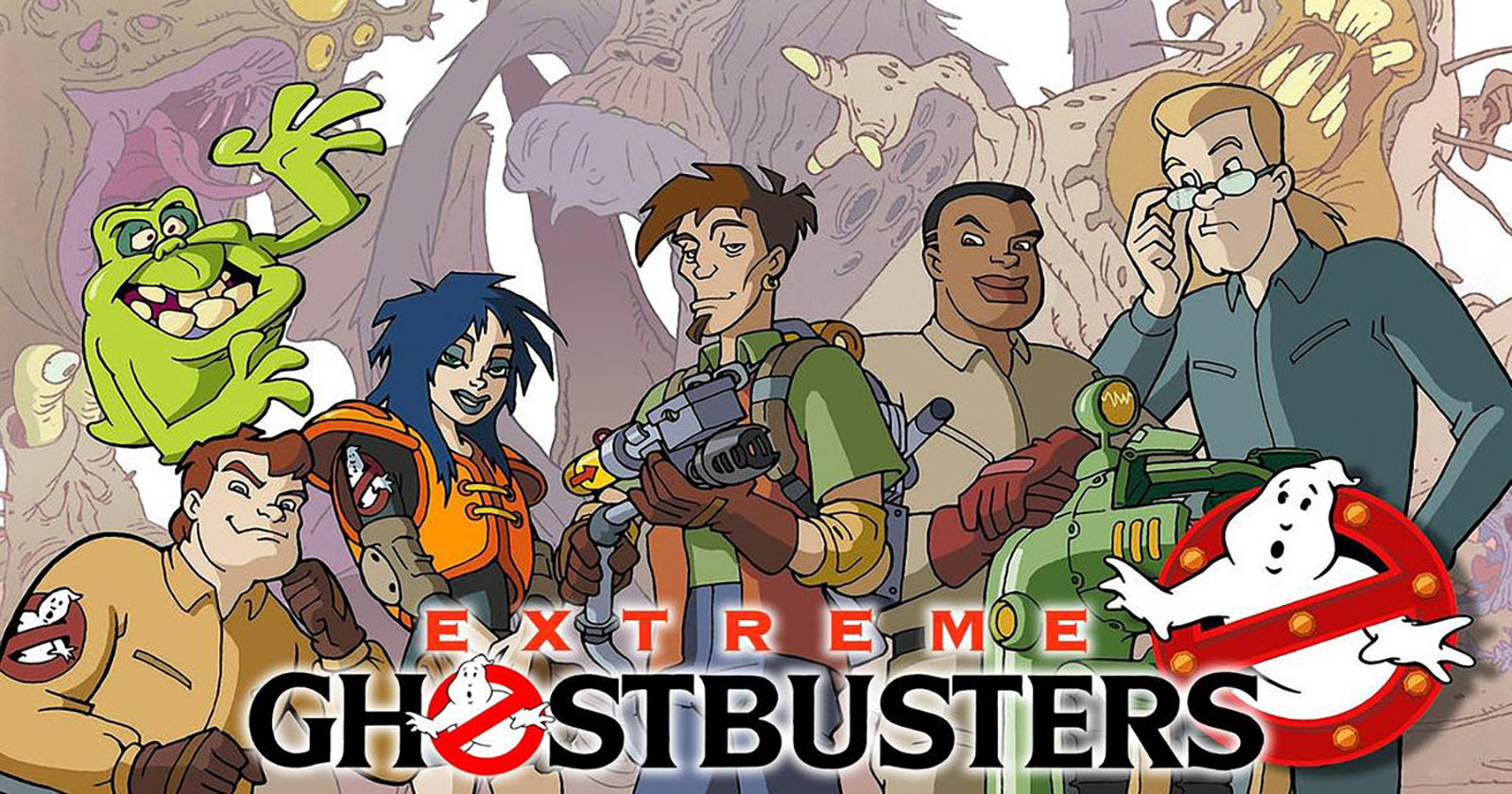
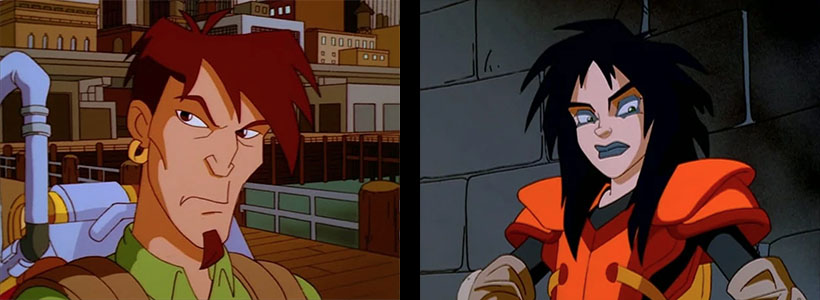
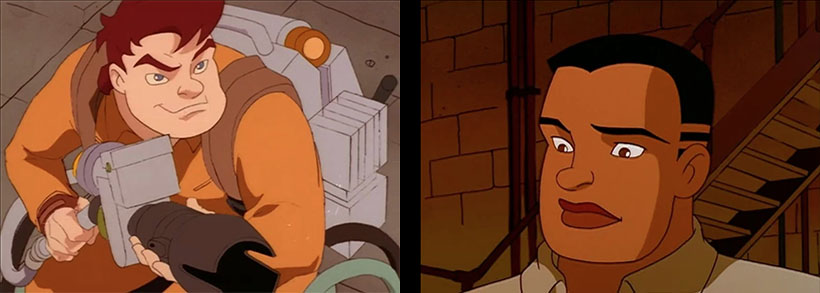
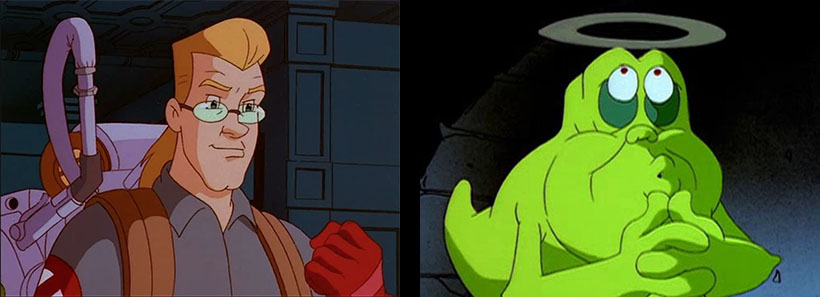
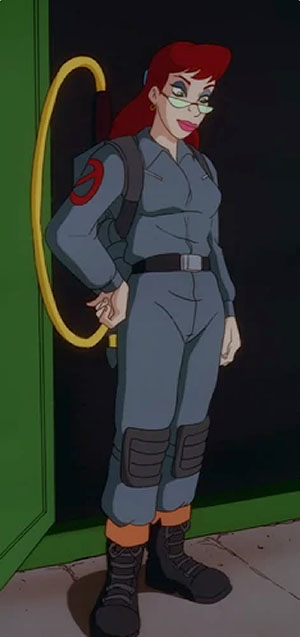
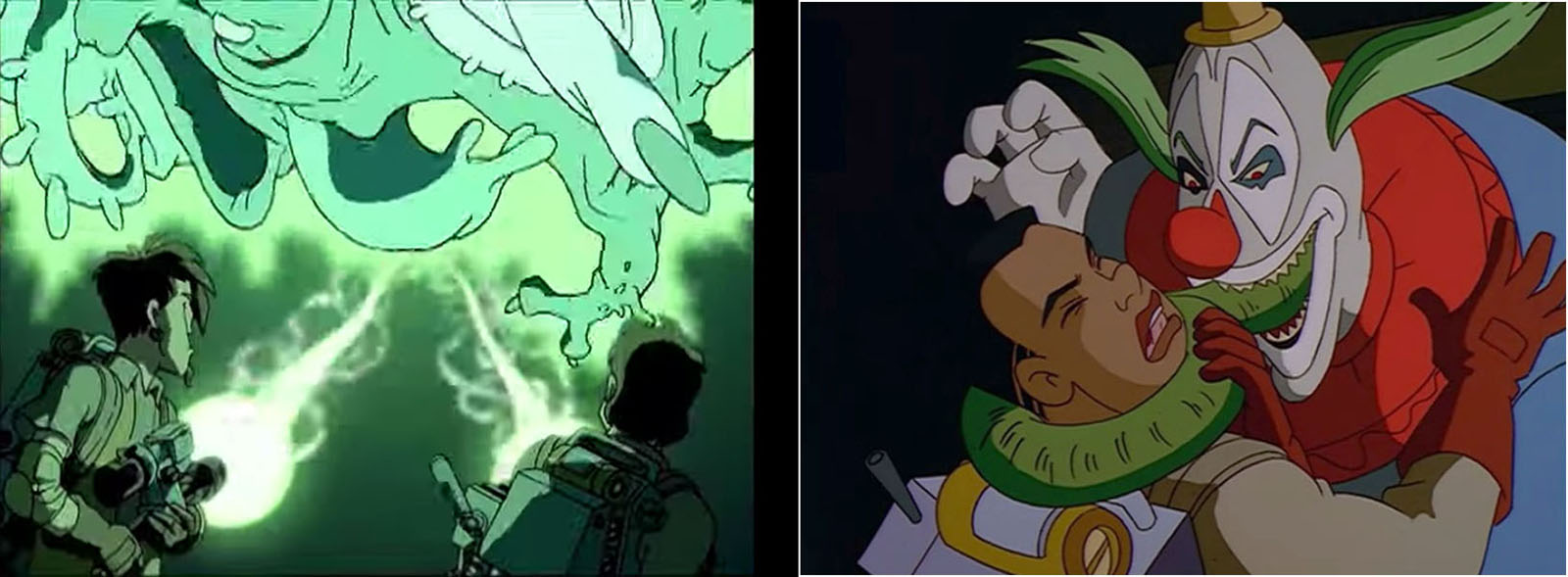

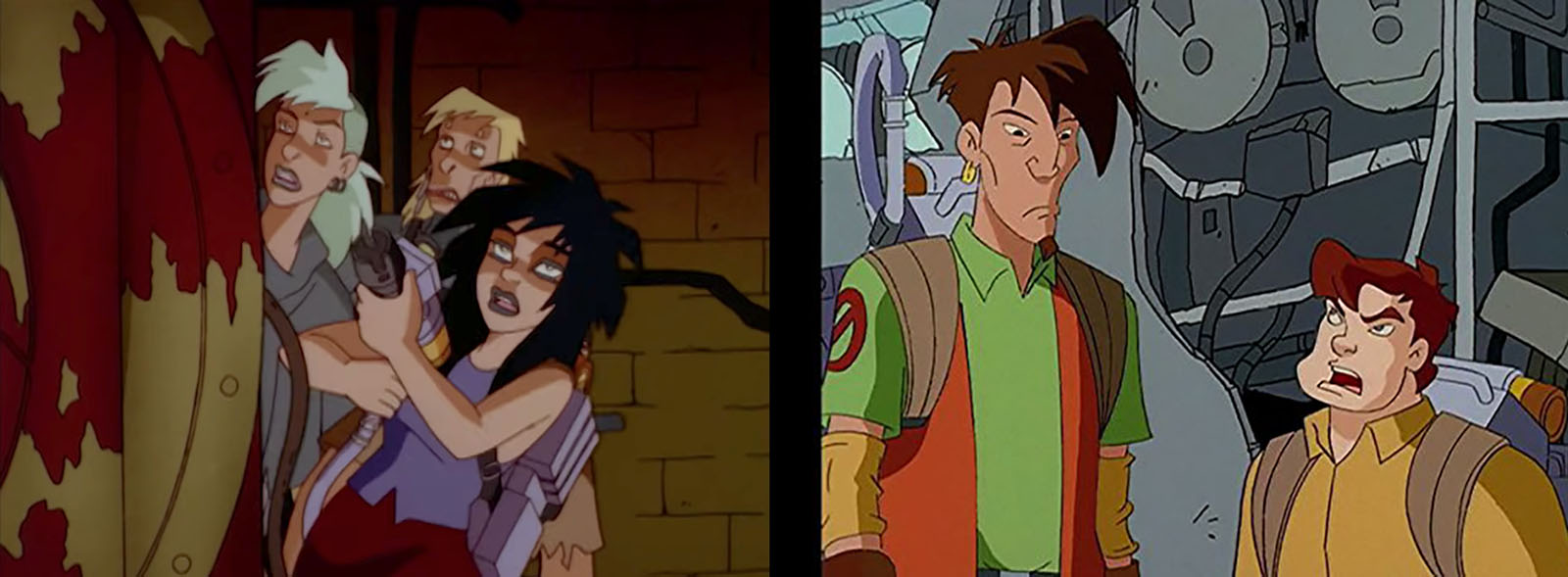
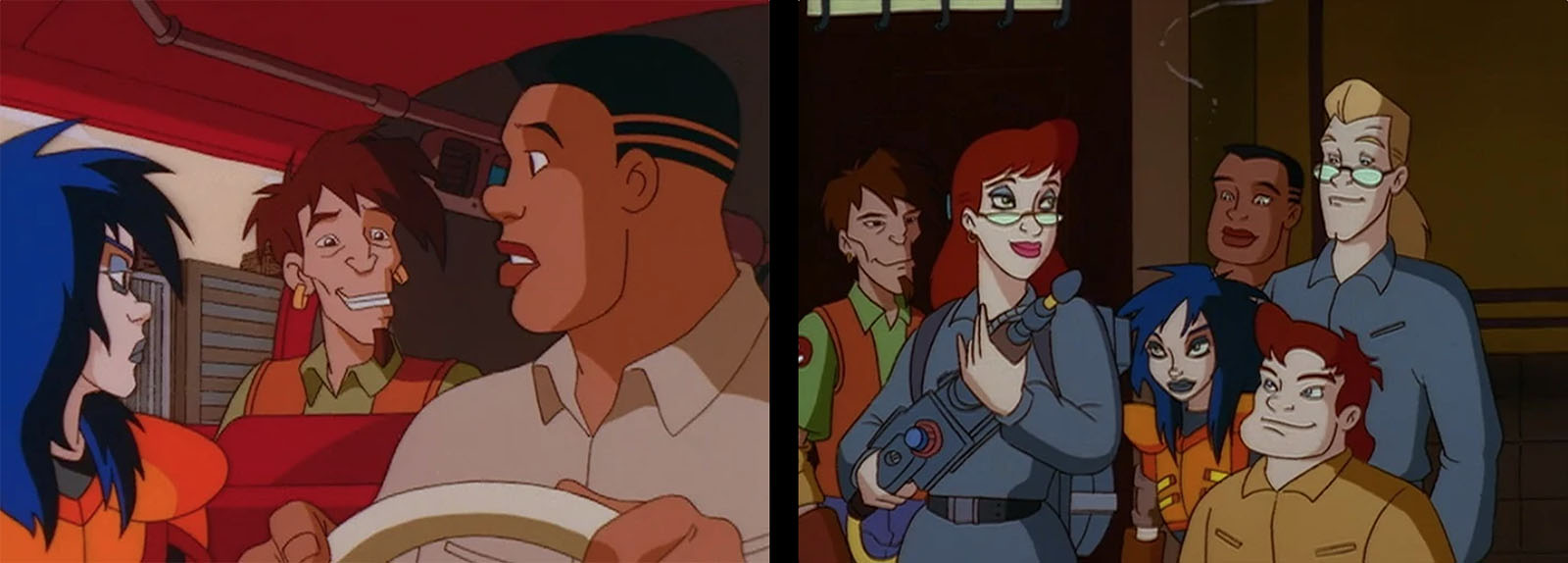
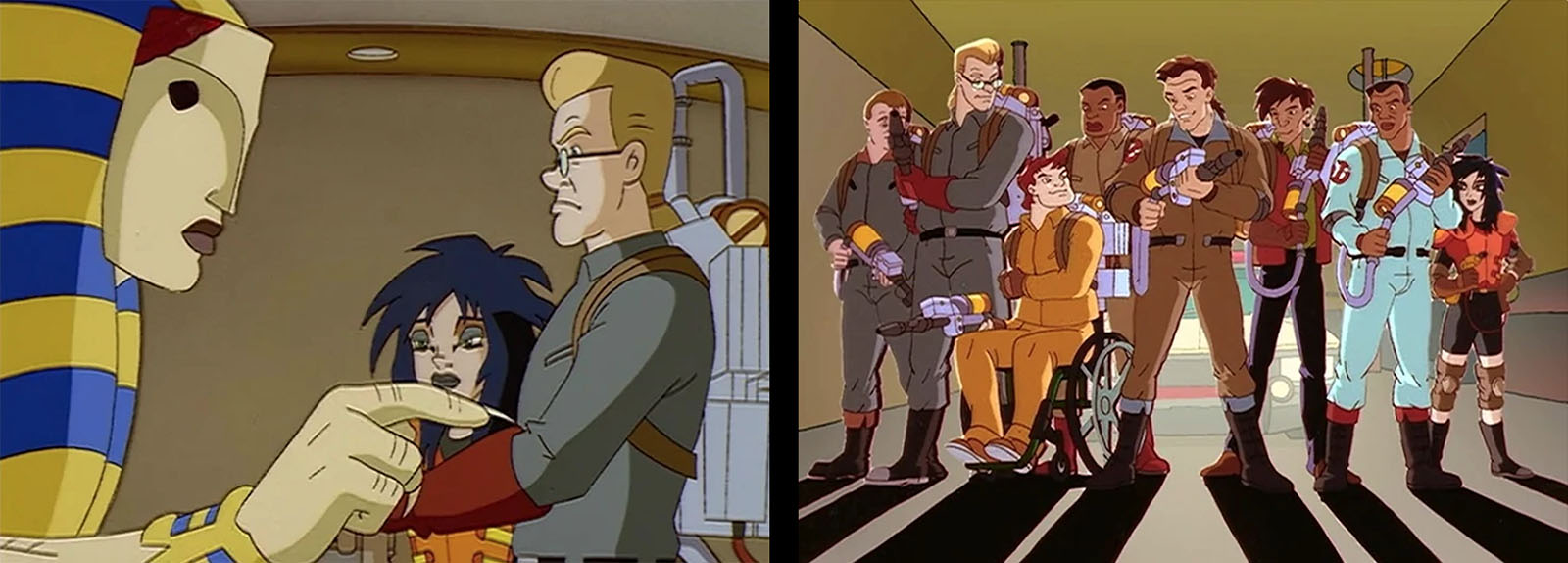
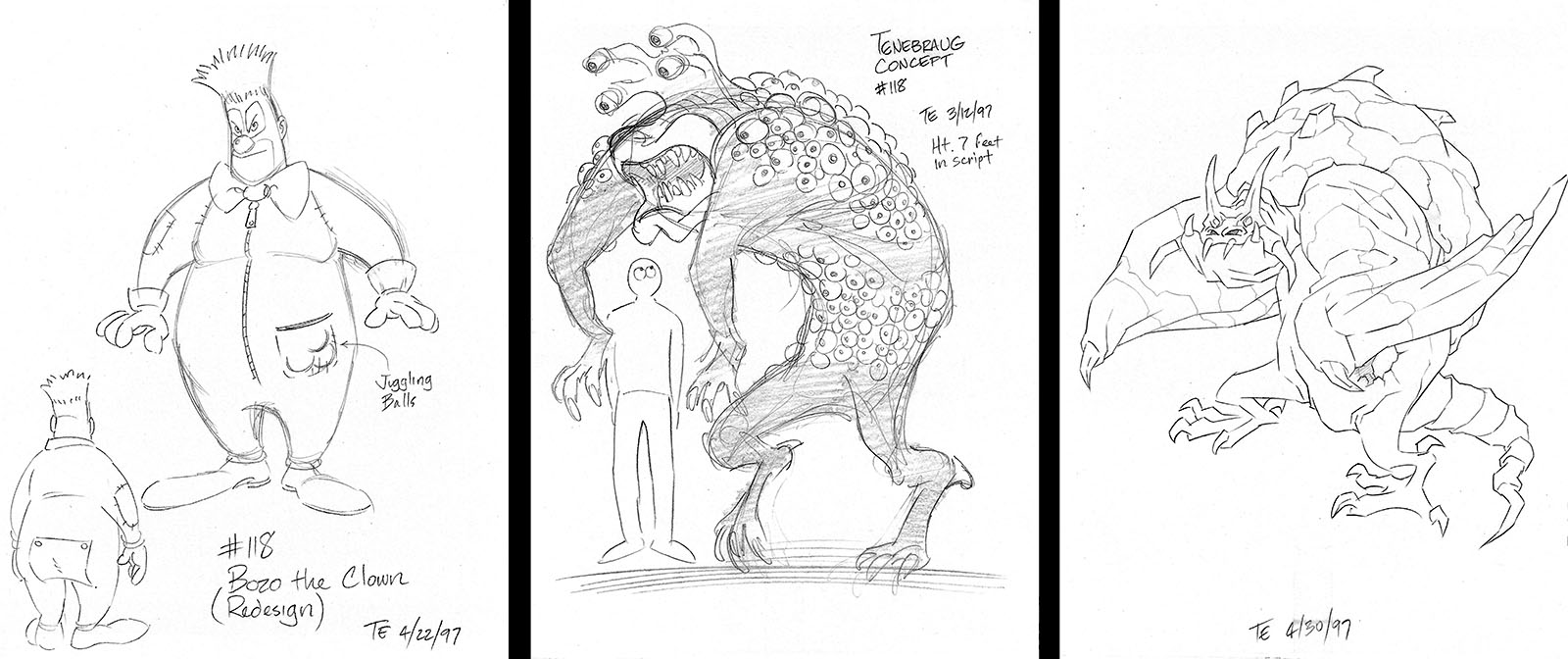
What an interesting and productive part in life. However, as well as many things you do.